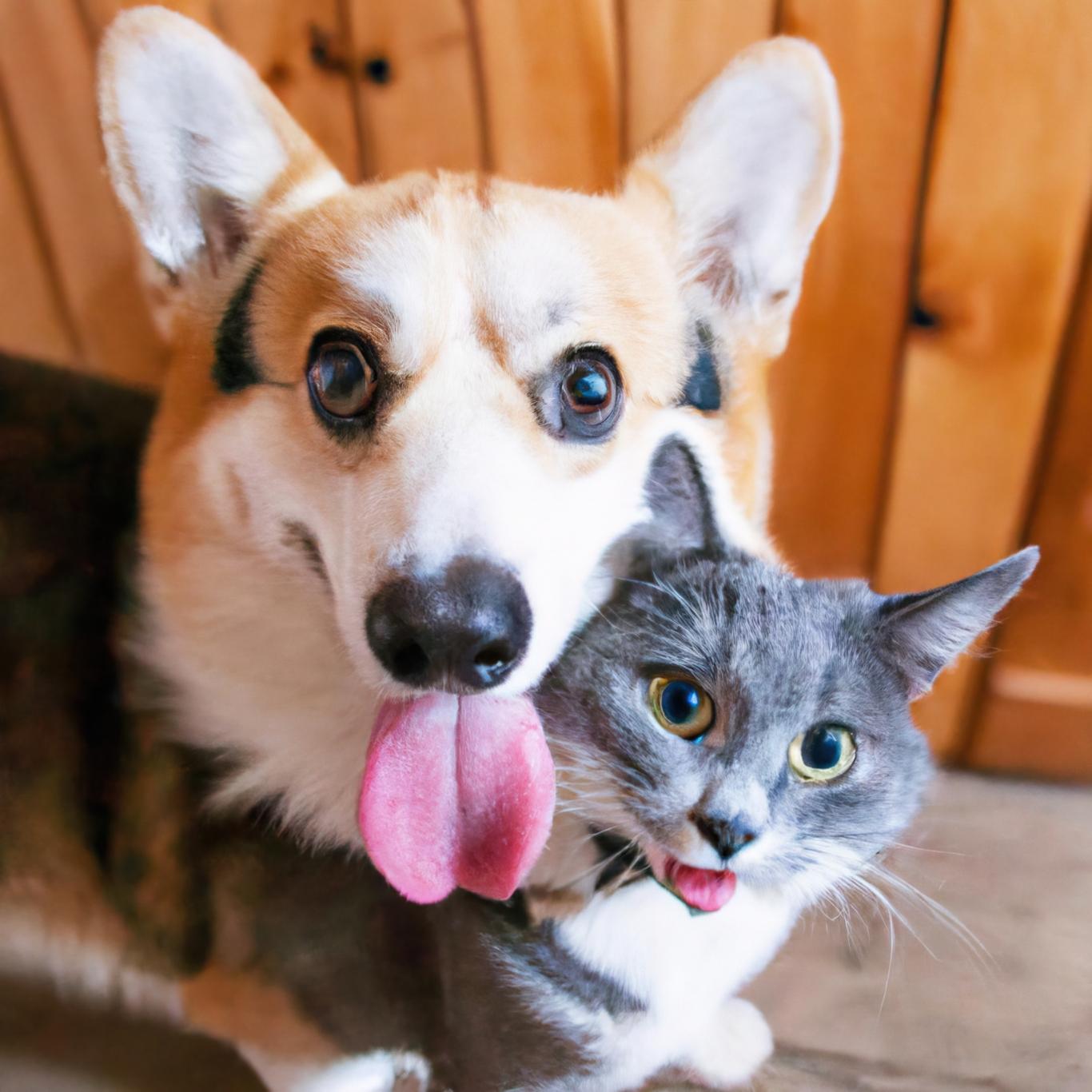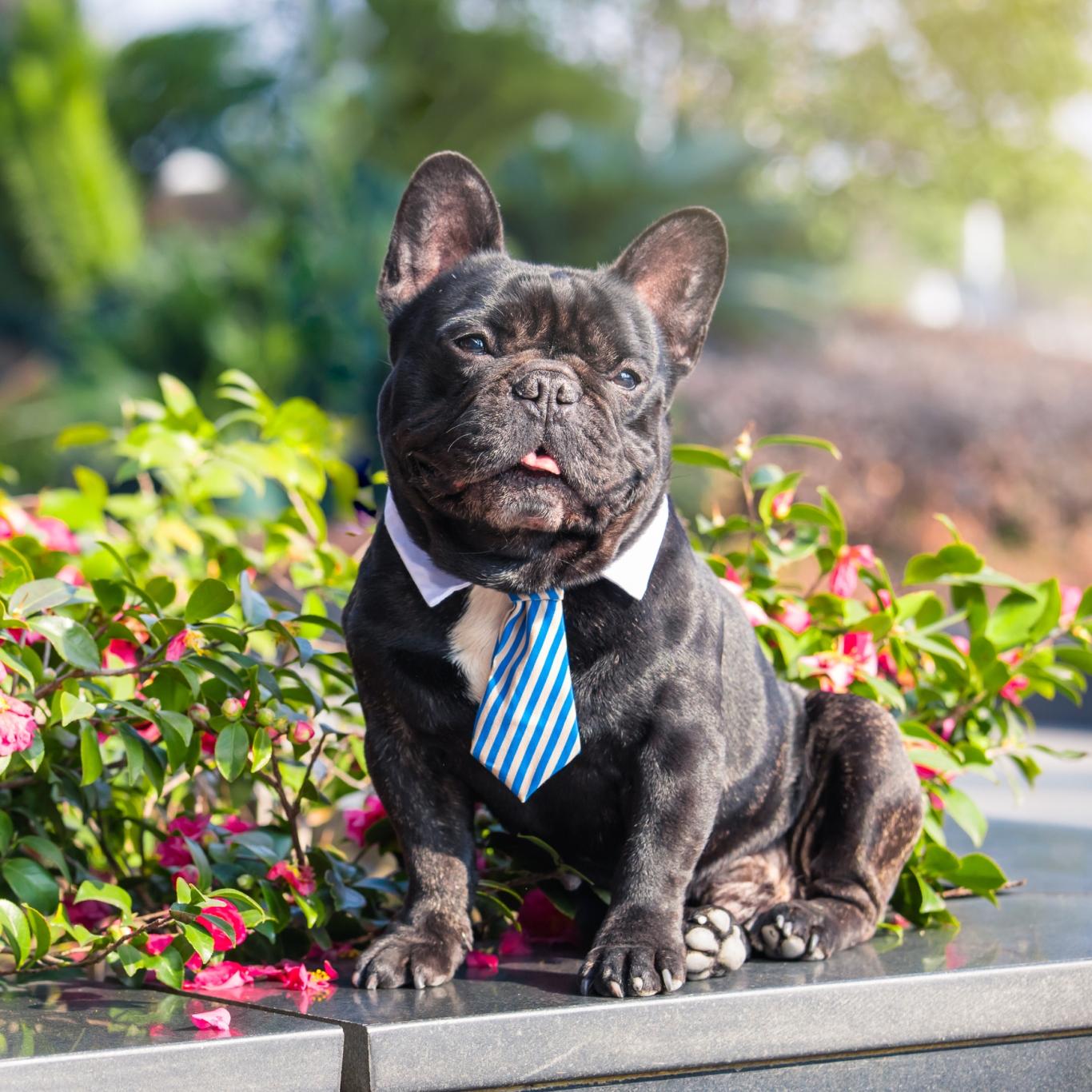Writing a resume can be tricky, and now it seems like even your dog can relate. If you’ve been looking at pet-friendly apartments, you may have encountered questions about a pet resume. While your cat doesn’t have to put on a suit and meet with a potential landlord, it can sound that way if you’ve never heard of a pet resume before. Rest assured, a pet resume is less daunting to create then the average human resume.
In this article:
- What Is a Pet Resume?
- Why Do Landlords Request Pet Resumes?
- What Types of Pets Need Resumes?
- What to Put on Your Pet's Resume
- The Benefits of Having a Pet Resume

What Is a Pet Resume?
A pet resume is a summary of your pet’s best qualities, breed, medical history, and routine. It proves to your landlord that you are a responsible pet owner. Pet resumes validate that the property, other tenants, and four-legged residents won’t be negatively affected by your pet
Why Do Landlords Request Pet Resumes?
For most renters, writing a resume for your furry friend may have you scratching your head. But there are legitimate reasons for a landlord to ask for one.
Unfortunately, not everyone is a responsible pet owner which can lead to some serious issues for landlords to deal with. Properties getting overrun with fleas, lingering odors, constant noises, and injuries are just a few of the issues that result in renting to irresponsible owners. A pet resume proves that you are a great pet parent and helps landlords feel reassured that you and your pet won’t cause any issues.
Many animals or certain breeds are not allowed in rentals because they are unfairly considered aggressive. Writing a pet resume gives owners a chance to fight stereotypes and show that their dog or pet can live without incident on the property.
What Types of Pets Need Resumes?
Pet resumes are most common for dogs and cats, but properties may require a resume for any pet. Most of the same information should be included on every pet’s resume, you may just want to emphasize certain sections depending on the type of pet.
For example, your cat’s resume should highlight things like flea prevention medicine and spay/neuter status. If you have an exotic pet like a snake, highlight the type of enclosure you have for it and the cleaning schedule. A notoriously noisy pet’s resume, like a bird, should include its schedule and its most active times.
What to Put on Your Pet’s Resume
Have fun with making the resume. There are plenty of formats and styles you can follow online. Look around and see which one you like best and copy that layout; just make sure that you have all of the following information included.

Photo
Photos are key, especially if you have a dog or animal deemed as “dangerous.” Everyone loves looking at cute pet pictures. Include one picture on the resume and attach a few extra pictures as well. Attach pictures that best show your pet’s personality or ones where they are interacting with others. You can even send a video of your pet interacting with people or other animals. We all have camera rolls filled with pictures of our pets being cute. See what you have and attach them to the resume.
Pet’s name
The top of the resume should have your pet’s full name. Go ahead and put your last name with their first name so your landlord immediately knows that this is your pet.
Age of the pet
Your pet’s age should be stated. If you’re not sure of the exact age, give your best estimate. If you have no guess about the year, just write their age status, i.e., “puppy,” “adult,” or “senior.”
Breed and weight
Breed and weight should also be at the top of the resume because these are the two things that can raise the eyebrow of landlords. Many properties ban pets based on breed and weight so this information is needed. Hopefully, Fido’s excellent resume will change the mind of your landlord if their breed and weight are normally not allowed.
If you’re unsure of what breed your pet is, give your best guess followed by the word “mix.” For example, if your dog looks like it may have lab in it, you would say your dog is a “lab mix.” Note that many breeds aren’t allowed on properties. If your dog looks like it is a husky/lab mix, maybe just put that your dog is a “lab mix.”
If you don’t have a dog or cat, you still should indicate the breed or species. Animals like birds, rabbits, and snakes can vary greatly in habits and size based on the breed and species.
Your name and contact info
Somewhere at the top of the resume should also be your contact information. Your name, phone, and email should be included. This makes it easy for your landlord to match up pet to parent.
Vaccinations, medical history, medications
Putting your pet’s medical history is vital as this proves your pet won’t be at risk of spreading disease. The ASPCA has a list of core vaccines your cat and dog should have. Be sure to list out what vaccines your pet has and when these vaccines were administered. While it’s not a core vaccine, like a rabies shot, those in a multifamily community may have to have their dog or cat vaccinated for Bordetella as well. Rabies and Bordetella are administered every year or every three years, so give your landlord the documentation of when these vaccines were administered and when they need to be given again. If you don’t know where to find this information, ask your vet.
Some places may require all pets to be spayed or neutered. Therefore, stating whether or not your pet is spayed or neutered is important to put under this section. Listing out medications your pet is on is also important. Landlords like to see flea and tick prevention. But list all other medicines as well.
Pet liability insurance information
Pet liability insurance is an excellent thing for renters to have. It’s rare for a landlord to require pet liability insurance, but it’s in the best interest of renters to have it. This is different than pet insurance (which is still good to have and include on the resume) because pet liability insurance protects renters from damages to another person’s property or injuries sustained by another person from your pet. This is especially helpful if you have one of the breeds that have been deemed as “aggressive.” You’ll want to attach the appropriate plan information to the resume.
Your pet’s habits and personality
Highlight your pet’s personality in a cute “about me” section. Talk about any funny quirks or personality traits that makes your pet unique. Keep it fun and make sure to include all the best traits. Does your dog have a best friend? Maybe your Guinea pig loves obstacle courses, or your bird has a favorite song it dances to. Get creative and make it cute so your landlord gets a good idea of you and your pet.
Your care routine
You can stick this in its own section or in the “about me” section. Talk about grooming habits like how often you take them to the groomer, when you give them baths, and/or how often you clean the cage. Also include their exercise routine. Maybe you go on walks, runs, or go to the park to play with friends. If you don’t have a dog, still include the routine. Maybe you let your bird fly around the house at night or let the rabbit free roam when you get home. Whatever the daily schedule is, put it in.
Your pet’s training and skills
If your pet has any training or special skills, highlight them in their own section. Things like regular training sessions or completed training classes should be included. If you have a working pet that goes to places like hospitals, schools, retirement homes, etc., add it to their resume. Some active dogs do agility courses or are trained for hunting. All of your pet’s special skills should be added to show off their talents and give your landlord an understanding of their personality.
References
Like your own resume, references back up all the information you are claiming. A past landlord, trainer, roommate, neighbor, vet, or friend with close contact to your pet are great people to add as references. Nothing is better than a firsthand account of what you’re claiming on the resume is true than someone who works with or has lived with your pet. Fox example, having an old neighbor back up the claim that your bird doesn’t chirp at night or having your past landlord say that your gerbil cage doesn’t have an odor and is properly cleaned means a lot.

The Benefits of Having a Pet Resume
Even if your landlord doesn’t require a pet resume, they are great additions to a rental application. It gives you a leg up from other residents as it shows that you’re willing to put in the effort and be a trustworthy pet parent. While it might seem a little unfair that landlords are allowed to say which pets they do and do not allow on their property, they are within their rights to do so. A pet resume could help you plead your case and persuade your landlord to allow your pet.
Pet resumes are by nature a bit silly, so have fun with it. Keep it professional, but light, and really set yourself as a pet owner and your “good boy” apart from others. This is your chance to prove you are a responsible pet owner and show that your pet is special despite any unfair stereotypes.






